Following on from some comments made after the last post, I’m grateful for several members of the group sending me photos relating to points raised last time. Unfortunately WordPress doesn’t allow photos to be included in comments, but the topics are interesting enough to merit more consideration, I think.
Firstly moles, and Lynne Sharpe kindly sent me the following photos of extensive mole activity in her fields this January and February. We have had similar areas of molehills appearing in all our fields. Knowing little of mole ecology or habits I thought I should do a little digging….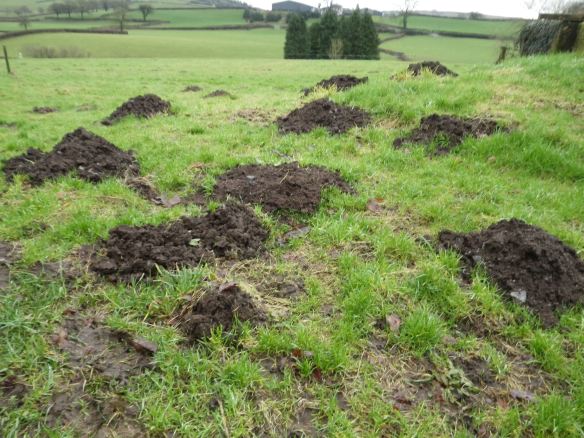
As always, your choice of google search term greatly influences what you find, but using “mole biology and molehills”, I noticed that the first 4 listings were all about how to exterminate the poor creatures!
Switching search terms to “why do moles make molehills” led to an American site, by Tom Clothier, which I would urge all readers to click on (here), particularly if they want a good side splitting laugh, to cheer them up.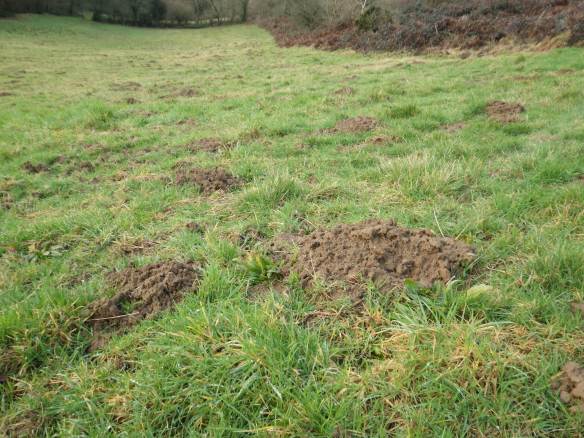
Actually in my brief searching I couldn’t find any real in depth (sorry) article, but the gist of the late winter/spring mole hill explosion is that moles are naturally solitary, and their feeding tunnels are very shallow. It’s when the males are off in search of mates in early spring that they dig deeper tunnels for exploration, making high pitched squeaking sounds to locate females. Whether more molehills mean more moles per acre than the usual 3 to 5, or whether there’s a shortage of females this year, and the males are becoming increasingly desperate, I don’t know. Nests are created as well along these deeper tunnels, and it’s the spoil from all this activity which gets pushed up as the molehills. Quite what happens when 2 moles meet in a tunnel narrow enough for just one, I’m not sure – males will fight, but what if it’s the much sought after female?
Anyway leaving that question hanging in the air, or rather underground, I’m very grateful to Andrew Martin for sending in the following text and fantastic photos about his efforts in dissecting owl pellets he’s found on his land to determine the diet of his local owls…
I think the numbers of different animals found in the pellets reflects firstly how likely the owl is to encounter each mammal species in the habitat where it hunts, and secondly the mammal species densities in that habitat. For example, tawny owl pellets would be much less likely to contain a high proportion of field voles as they hunt in woodland rather than grassland as the barn owls do.
(Field Vole skull and lower jaw above)
It would be very surprising if anything other than field voles was the predominant prey in grassland, as that is the habitat field voles prefer. It could be that “our” owls had a higher proportion than normal of bank voles, possibly because they are hunting over quite small fields so tend to be nearer to hedges (which bank voles and woodmice would prefer) than they would in big fields. One always hopes to find something rare to get a new record, for example harvest mouse or dormouse. But barn owls are very unlikely to catch a dormouse as they live in woodland and don’t often come down onto the ground, and barn owls watch and listen for their prey by quartering areas of grassland, not up in trees.
(Woodmouse skull and lower jaw above).
Plus, of course, dormice are rare. Harvest mice skulls and jaws are occasionally found in barn owl pellets but are fragile. They too are rare and don’t often go down to ground level. So rare animals are rare in owl pellets, but the proportions also reflect habitat preferences of the owl and the prey. The vole has grinding teeth almost like a sheep, the mouse has generalist cusped teeth like ours, and the shrew’s teeth make one grateful that they are so small.
(Common Shrew skull and lower jaw above)
On the subject of Owls, Nick Wadham contacted me recently with an owl call recorded in his meadow near Brechfa, which Andrew was able to identify as a Tawny Owl. Andrew commented, in reply to Nick’s query…
“Yes, we know what this is. We quite often hear it here, and it’s one of the many sounds made by tawny owls. We often remark “The Warbler is out there in Hood Wood again” (referring to the little wood next to our place which belongs to our neighbours the Hoods).
Have a look at this website:
http://www.godsownclay.com/TawnyOwls/Calls/tawnyowlcalls2.html
and scroll down to “Worried warbles, Warble (male)”.
Brilliant website this. It brings it home to one how inadequate most ID guides to bird sounds are. They often contain only the most often heard songs/calls, and totally ignore large part of the repertoire. Certainly with jays, and judging by this website, Tawny Owls as well!”
I’m trying to incorporate Nick’s audio clip below, but don’t know whether this will work for readers – have a go at clicking on it. (After a lot of fiddling I’ve finally sussed how to embed this…a first for me in 6 years of WP)
Finally Rachel Barber has kindly sent in the photos and text below of emerging signs of spring from her pond and meadows. Thanks Rachel…
I’ve been watching for the first signs of spring. In the sheltered spots in the fields, the new shoots have been arriving for the last week or so. There is one hawthorn weeks ahead of the others – and some green leaves on the elder. The catkins on the hazel are a soft yellow. On the ground the bluebells are just through – as are the spotty leaves of the early purple orchids, which run along the field edge of our top field. The wild strawberries never really disappeared but I can see new shoots. The pond is full of frogs and the level of noise is a real surprise – being audible from quite a distance. So just a few photos – to record the day.
Thanks for reading, and enjoy the longer, brighter days, as most of the natural world now seems to be doing.


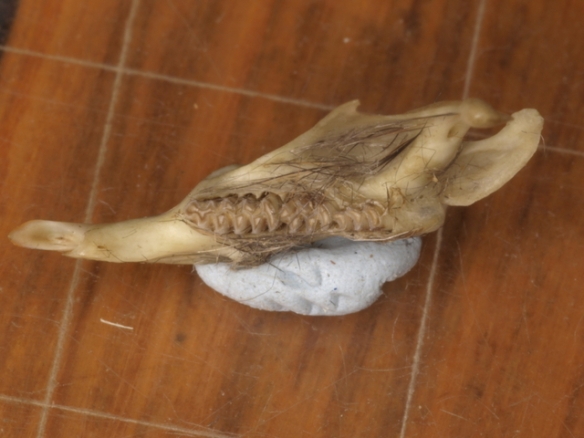
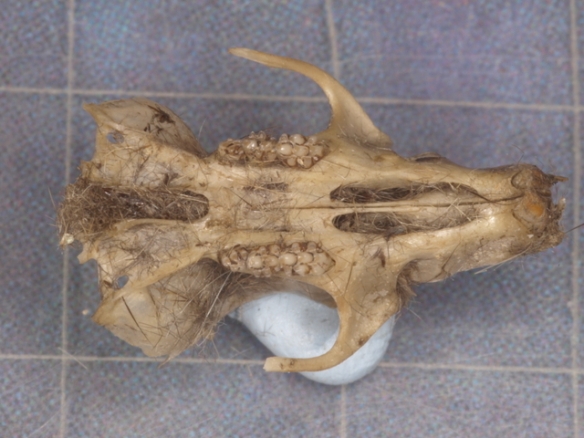




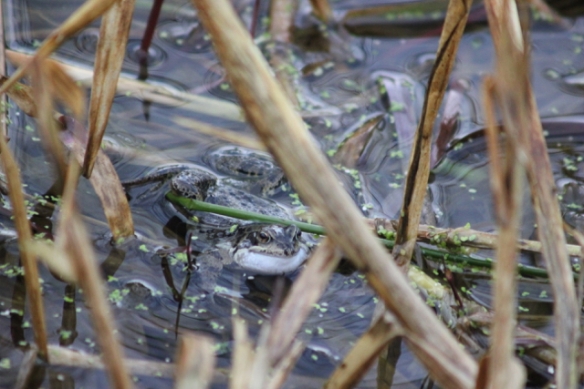

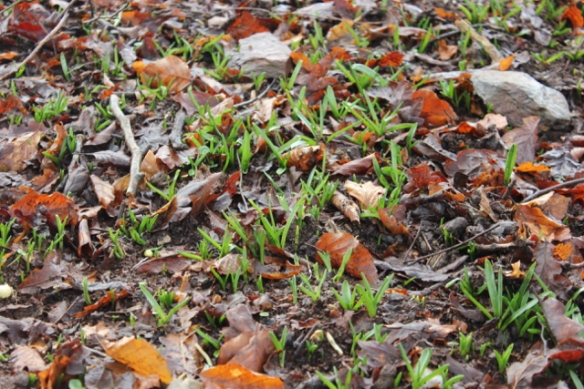
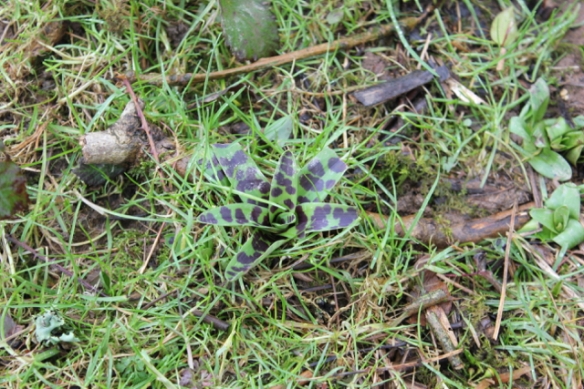
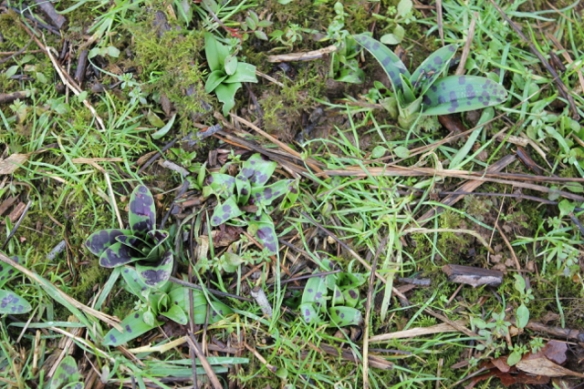

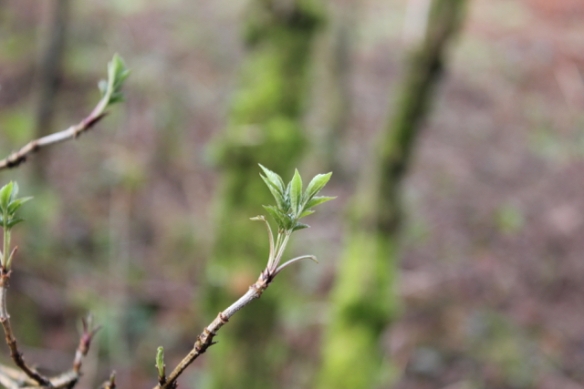

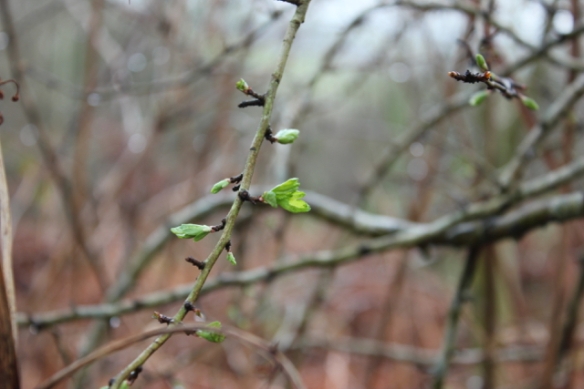
Hi Julian, with the children’s help, I once dug up most of the lawn looking for one mole, we took him/her to the woods where I like to imagine a long life lived, my husband believes it came back here. However, we have not had any visit since having a dog who urinates on occasion on the lawn. So dog urine may help? But probably not on a large meadow! I followed your link and no mention of my offered solution……
Spring is slow but very welcome.
LikeLiked by 1 person
Hello Julie
Thanks for the comment, and interesting point about the dog… I wonder whether they avoid areas of fields regularly visited or marked by foxes? Or whether foxes ever manage to predate them? Possibly not according to the link.
We’ve had a couple of glimpses of spring here – 2 hours of sunshine and warmer weather and I saw my first bumblebee of the year, yesterday (18th, which is quite early for us here). But back to mild drizzle today,
best wishes
Julian
LikeLiked by 1 person
Thanks for the catch up Julian. A few years ago an old boy naturalist told me that he’d noticed moles were much busier in winter than they used to be. He put that down to milder winters which allowed moles to push through softer non-frozen soil – a consequence of climate change.
LikeLike
Thanks Bruce, that might indeed be a factor in why there are so many molehills around now.
LikeLike